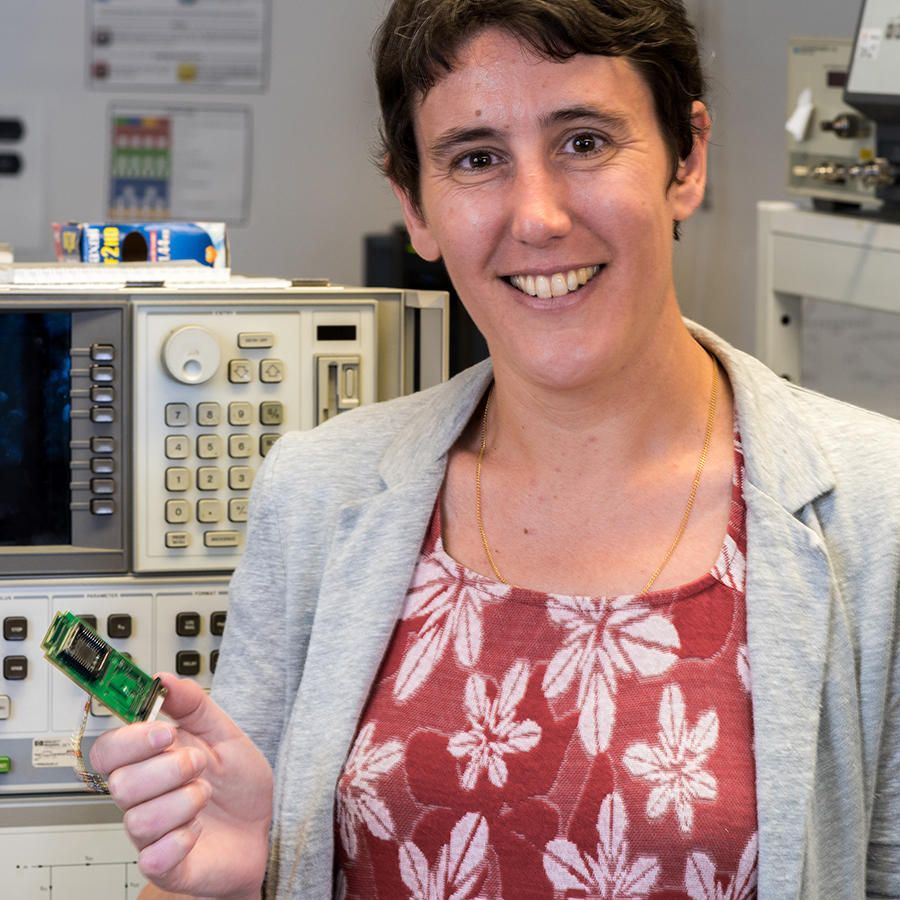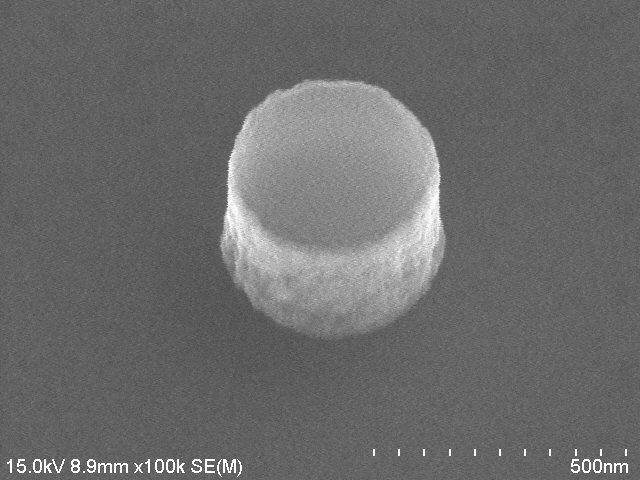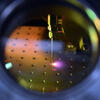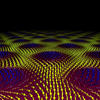You are here
Julie Grollier, a (bio)inspired researcher
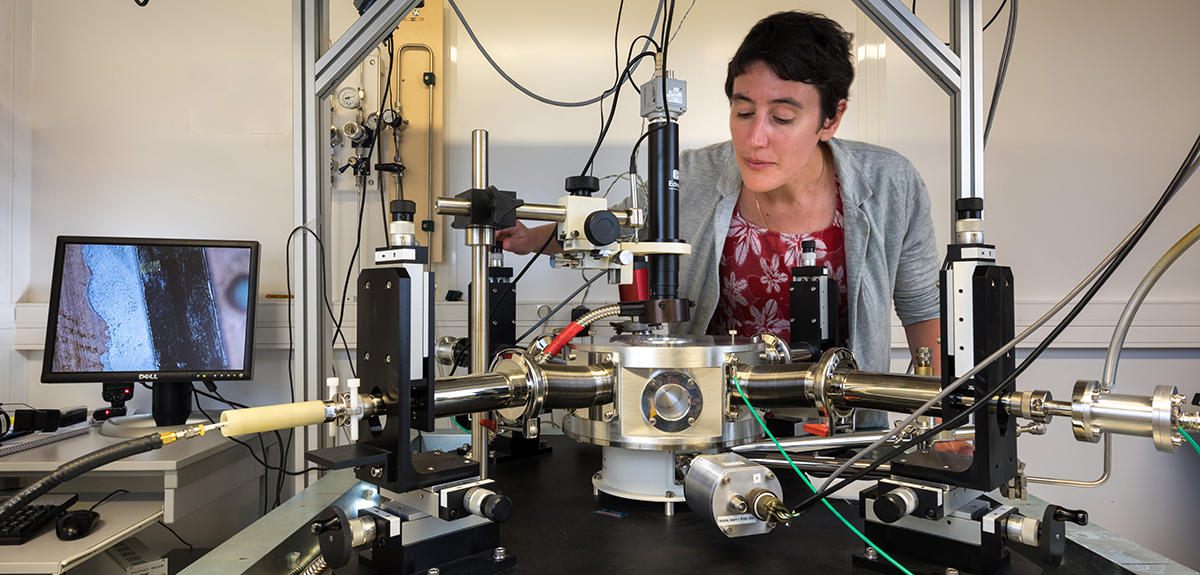
“Dreams, passion, and imagination,” answers Julie Grollier, laureate of the CNRS 2018 Silver Medal, when asked what is most important in her approach to research. Nanotechnology, neuroscience, quantum physics, materials science, electronics, mathematics, computer science... A host of disciplines are constantly jostling around in the mind of this physicist, who directs a team at the CNRS/Thales joint physics laboratory. Such a multidisciplinary approach may seem mind-boggling! Not to Julie Grollier, who has mastered the art of controlling the most fundamental “compass” of matter: spin electrons, or tiny “magnets” that can move in two directions, “up” or “down”. Command these famous spins, and you can steer a material's magnetic properties.
Controlling spin and boosting RAM
The theoretical possibility of reading and controlling spin using electric currents emerged in the 1980s. Spintronics, the new discipline that it gave rise to, offered Grollier fertile ground for developing the multidisciplinary approach she is so fond of. “During my dissertation, a friend steered me in that direction,” she recalls gratefully. A few years earlier, as a student at the Paris-based high school of electricity (Supélec), she knew nothing about spintronics, and was desperate to find a job that could satisfy her insatiable curiosity. “A first internship on superconductivity at the CRISMAT1 laboratory in Caen (northwestern France) was an eye-opener. I finally found a way to reconcile my ambition to conduct concrete experiments with fundamental theoretical issues.” This decisive experience encouraged her to pursue a thesis in 2000, under the supervision of “an outstanding researcher”, according to this same friend.
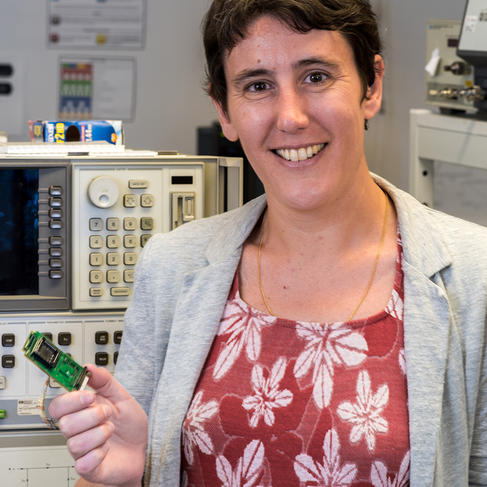
The researcher in question was Albert Fert, who would go on to win the CNRS 2003 Gold Medal, and the 2007 Nobel Prize in Physics, which he shared with Peter Grünberg for the discovery of Giant magnetoresistanceFermerA quantum phenomenon connected to electron spin, and observed within a multilayer: its resistance to the passing of an electric current falls sharply under the effect of a magnetic field., the phenomenon that makes it possible to read digital data from most of the hard drives on the planet. “I was very fortunate to work with him,” she acknowledges, and quickly took advantage of the opportunity. “During my dissertation, I was one of the first to show that the direction of magnetisation can be controlled using an intense electric current within multi-stacked nanostructures," she enthuses in reference to these “layered cakes” that alternate insulating and ferromagnetic layers just a few nanometres thick (a nanometre measures one millionth of a millimetre, or the equivalent of at most a dozen atoms).
The discovery was well worth it, for it meant that the numbers zero and one could durably be inscribed within matter — depending on spin — thereby opening the way for a new, better-performing and less energy-hungry magnetic memory technology. Industrial actors quickly saw its value in designing RAM, which temporarily stores a processor's data and determines the processing speed of computers. “The phenomenon is currently used in what is known as ST-MRAM memory, which is especially fast, and came on the market in the last two years,” she adds.
Assembling a million artificial neurons
The desire to contribute to both theoretical and technological progress prompted the scientist to join the CNRS/Thales joint unit in 2006. She set herself a fascinating challenge at the time – that of creating computers with processors inspired by the functioning of the brain's biological neurons, in other words neuromorphic processors. “They may prove to be faster and less prone to error, and could consume up to 10,000 times less energy than current CPUs,” she ventures. Her idea is to use the power of spintronics to design artificial “nano-neurons” and “nano-synapsesFermerContact zones between biological neurons in the brain. They act as “connection buttons” and transmit information.” one thousand times smaller than the diameter of a strand of hair! This promising research, led by Damien Querlioz,2 has enjoyed European funding (ERC grant) since 2010. Seven years later, it led to a resounding proof of concept, with a first artificial neuron that can recognise figures between 0 and 9 pronounced by different people!
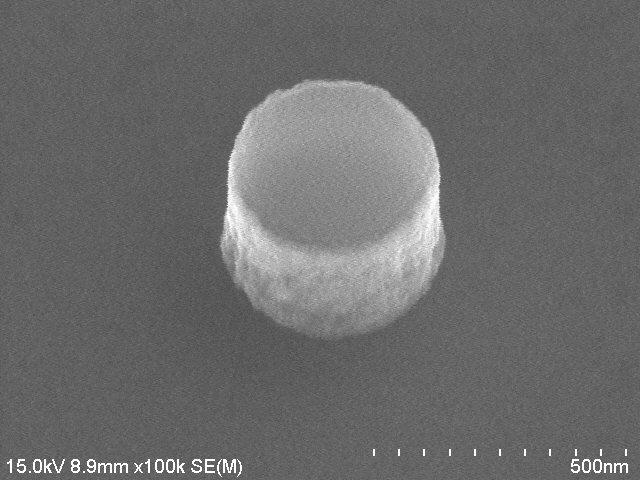
Widely reported on in the press, the achievement offers unprecedented prospects for “boosting” and “greening” artificial intelligence (AI). “A neuromorphic processor can considerably reduce the learning time and energy of the neural networksFermerMathematical functions that calculate a digital output value based on digital input values, and when connected as a network can numerically simulate the functioning of calculating units. so massively used in AI today.” To do so, Grollier plans to assemble up to a million artificial neurons. “It is the minimum amount needed for AI applications in medicine, or to control robots and autonomous cars.” In this endeavour, she can count on the GDR BioComp national interdisciplinary network, which she initiated in 2015. “Talking to people is the best way to learn,” she insists.
The human and collective dimension of research, a subtle combination of sharing, listening, rigour, and imagination, is one of the things she likes most. However, “when you are one of the few women – if not the only one – in conferences, it is still difficult not to doubt your own legitimacy,” she admits in spite of the excellence of her scientific career. “To inspire young women, it is important to change the image of the typical scientist, who is all too often depicted as a man with greying hair.” Her book3 on artificial intelligence intended for young readers, which she is in the process of finishing, could help make the difference.
_______________________________________________________
Career in 6 dates
1975: Born in Poitiers (central western France)
2005: Joined the CNRS as a researcher
2010: Awarded the Jacques Herbrand prize from the French Académie des Sciences
2015: Became a senior researcher at the CNRS
2017: Developed the first artificial neuron that can recognise the numbers pronounced by different people
2018: Awarded the CNRS Silver Medal
- 1. Laboratoire de Cristallographie et Science des Matériaux (CNRS / Université de Caen Normandie / Ensicaen).
- 2. Researcher at the Centre for Nanoscience and Nanotechnology (C2N – CNRS / Université Paris-Sud / Université Paris-Saclay).
- 3. Estelle et Noé à la découverte des intelligences artificielles ! (“Estelle and Noé set out to discover artificial intelligence!”), published by Millepages, forthcoming (in French).



